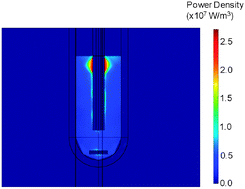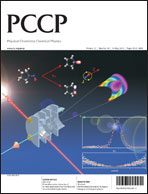This paper explains the phenomena which occur in commercially available laboratory microwave equipment, and highlights several situations where experimental observations are often misinterpreted as a ‘microwave effect’. Electromagnetic simulations and heating experiments were used to show the quantitative effects of solvent type, solvent volume, vessel material, vessel internals and stirring rate on the distribution of the electric field, the power density and the rate of heating. The simulations and experiments show how significant temperature gradients can exist within the heated materials, and that very different results can be obtained depending on the method used to measure temperature. The overall energy balance is shown for a number of different solvents, and the interpretation and implications of using the results from commercially available microwave equipment are discussed.
You have access to this article
 Please wait while we load your content...
Something went wrong. Try again?
Please wait while we load your content...
Something went wrong. Try again?


 Please wait while we load your content...
Please wait while we load your content...